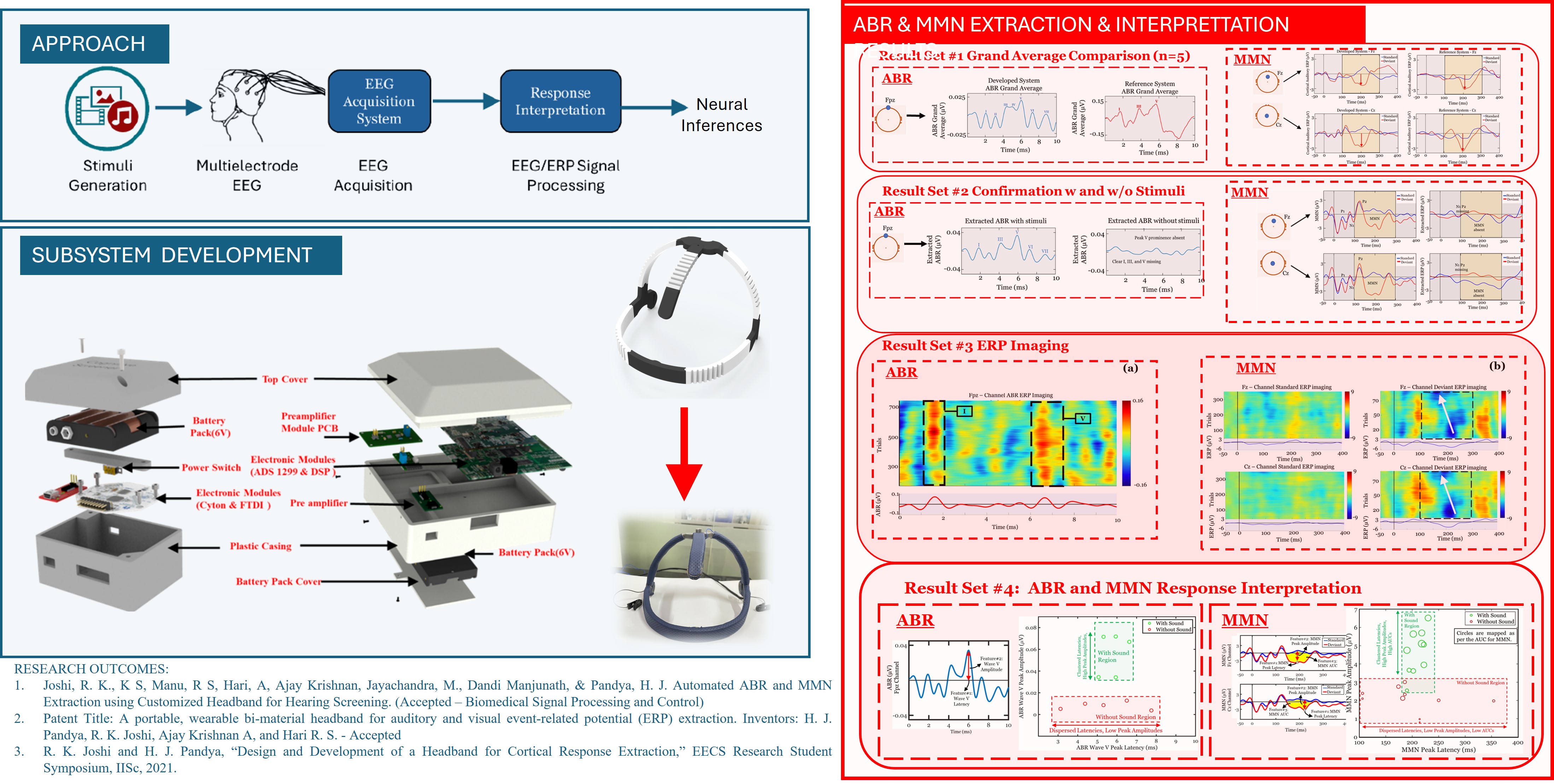Novel auditory-evoked brainwave analyser for automated hearing screening
– Ullas
Researchers at IISc, led by Hardik J Pandya, Associate Professor at the Department of Electronic Systems Engineering, and clinical collaborators from KIMS Hubbali, have developed and validated an innovative system for automated extraction of electrical signals in the brain (EEG) related to hearing, using a customised headband. The research aims to provide a cost-effective and user-friendly solution for large-scale screening of hearing in adults.
There are two key parameters in auditory screening. One of these is Auditory Brainstem Response (ABR), which involves tracking sound waves that travel through the auditory pathway from the ear to the brainstem. The test subject is usually given a stimulus – in this case, listening to specific tones – and electrical signals arising in the brain in response are carefully measured. ABR is the current gold standard used in clinical practice frequently. However, it checks only a limited portion of the auditory pathway. To address this limitation, another parameter called Mismatch Negativity (MMN) was extracted from young adults. MMN is a change in the brain’s electrical signals (EEG) in response to strategically presented auditory changes.

The developed system can capture both ABR and MMN in test subjects automatically and accurately. The setup consists of a custom-made headband with just three electrodes strategically placed to capture evoked brain waves in the form of EEG. The developed system is portable, easy to operate, adjustable for different head sizes, and uses adaptive filtering to eliminate non-neural noise. It uses special resins to ensure a robust electrode skin interface without making the subject feel uncomfortable. By changing the electrode positions, it can also be tweaked to track electrical signals related to visual stimuli. The developed headband is comfortable and has the potential to be deployed for large-scale screening.
The system was tested on five individuals with a satisfactory response. A patent has also been granted on the device. The researchers seek to now scale it up for large-scale hearing screening in both adults and children. They envisage performing more experiments covering a larger cohort of young adults before deploying the system for neonatal hearing screening.

REFERENCE:
1. Joshi RK, Manu KS, Hari RS, Krishan AA, Jayachandra M, Dandinarasaiah M, Pandya HJ, Automated ABR and MMN extraction using a customized headband for hearing screening, Biomedical Signal Processing and Control (2024).
https://www.sciencedirect.com/science/article/abs/pii/S1746809424003227
2. Invention Title: A Novel Headband for Sensory Pathway Scanning
Inventors: Hardik J Pandya, Rathin K Joshi, Ajay Krishnan A, and Hari RS.
Indian patent application filing number: 388085-001 (June 9, 2023)
Current Status: Design Patent Accepted & Published, Journal No is 14/2024 and Journal Date is 05/04/2024
LAB WEBSITE:
https://labs.dese.iisc.ac.in/beeslab/





